Index


Review: Mid tower case with a bunch of space
Fractal Design Core 3000 is a recently announced case that boasts many nice features, although surprisingly enough, it doesn't come with USB 3.0. On the other hand, the price of €56 is appealing, especially after considering that the Core 3000 is one of the highest quality sub-€70 cases we’ve gotten our mitts on. The case is tough, roomy, and comes stocked with three fans.
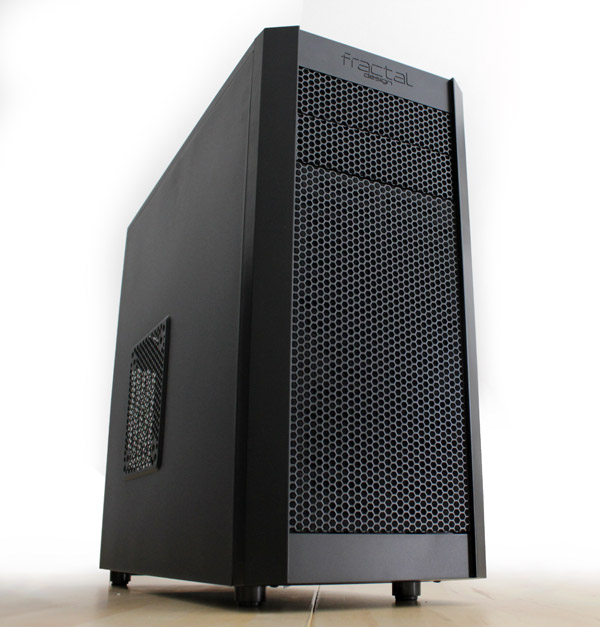
The Core 3000 measures 445x200x490mm (HxWxL). Note that we measured together with the front and top bezels and feet.
The Fractal Design logo breaks the monotony of the simple but stylish front panel. The company used a thick mesh grill, which indeed reinforces the image of toughness and quality of the Core 3000. The front panel has two 5.25’’ slots for optical drives, with a 5.25’’ to 3.5’’ converter also included.
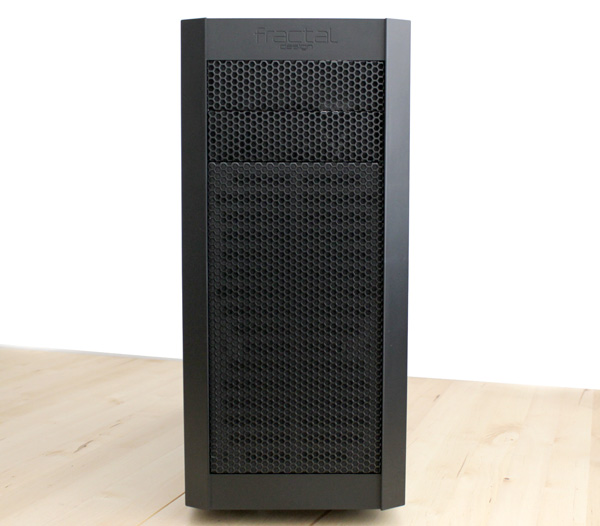
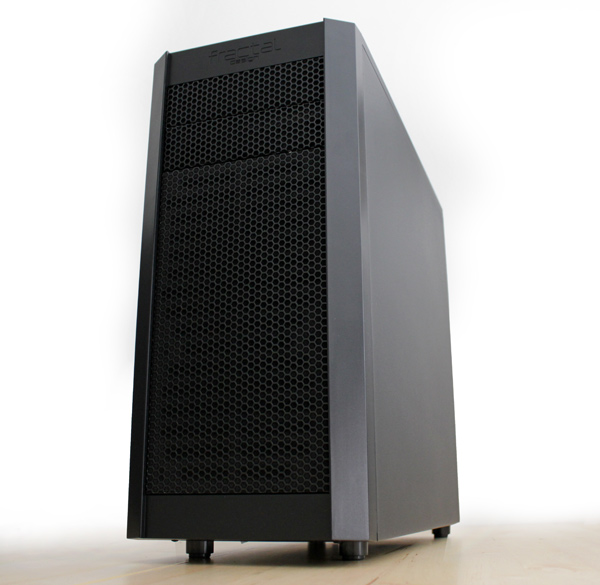
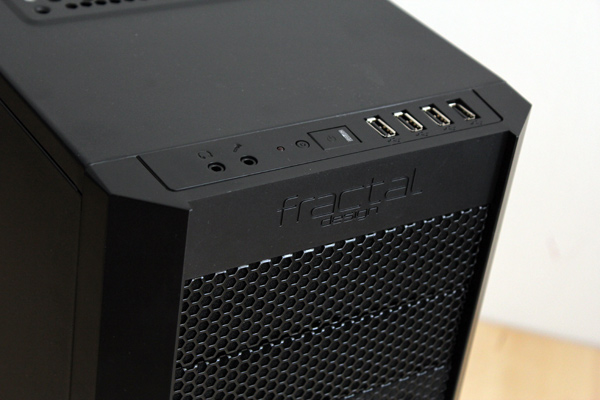
There are four USB 2.0 connectors on the top panel but, as we said before, there are no USB 3.0 ones.
The Core 3000 comes stocked with three fans but the case will take as much as seven. The top and front panels hold 14cm fans (1000rpm) while the rear panel has a 12cm one (1200rpm).

The front and bottom panels will take 12cm fan each, whereas the top and side panels can be equipped with 12cm or 14cm fans. Fractal Design strapped the Core 3000 with a fan controller that can handle three fans, which is a nice touch.
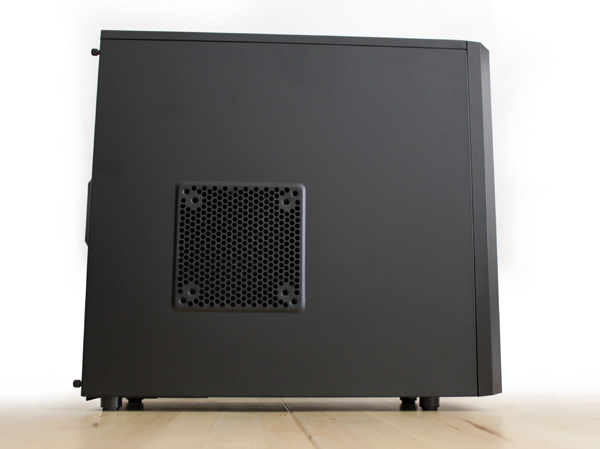
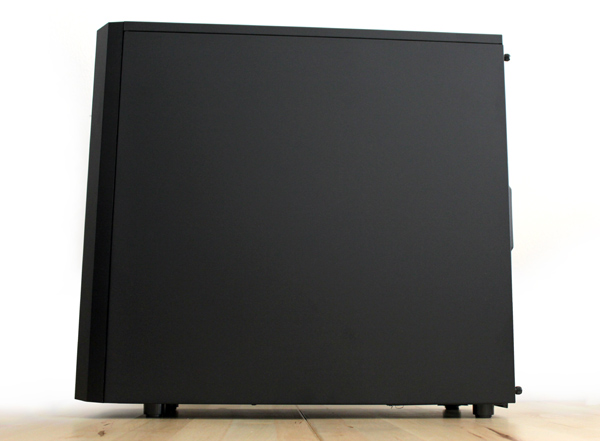
You’ll find dust filters on the front and bottom panel below the PSU. The bottom filter can be taken out for cleaning with a tug from the back of the case.
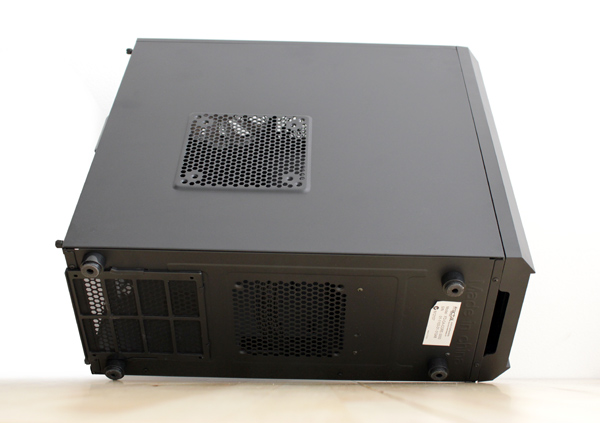
The Core 3000 stands on rubber feet that are stable and tall enough to allow the air to be drawn in from the bottom of the case.

A look on the rear panel reveals an important thing – the Core 3000 is wider than classic mid-tower cases. The side panel isn’t very close to the I/O panel, which is good as it means extra room for cable management.
The 445mm height and 490mm length of the Core 3000 mean that it’s one of smaller mid-tower cases but the 20cm width means it will easily take the largest CPU coolers. At a glance, everything looks pretty nice.

That the case is a quality one is evident from the fact that the Core 3000 comes with two HDD cages, one of which can be taken out in order to make room for some monster sized graphics cards.

The case will take a total of six 3.5’’ or 2.5’’ drives. You’ll find grommets in every bay but they’ll only work for 3.5’’ drives.

The Core 3000 will take two 5.25’’ drives and there’s also the always handy 3.5’’ converter. The case comes stocked with three fans, as you can see from the following picture.

The case packs enough room for mini-ITX, micro-ATX and ATX boards.
Cabling can be routed behind the motherboard tray, but cable holes could have been wider (at least in the case of the hole next to the PSU). Also, it would have been convenient if the company left a hole for a CPU cable on the motherboard tray.
The motherboard tray has a CPU backplate cutout which will make swapping CPU coolers easy as pie.

Strapping Fractal Design’s Core 3000 with gear was pretty easy.


The manual has no pictures and only has a few instructions on how to remove or flip the top HDD cage or how to clean dust filters. The manual states that the case comes with a one year warranty.

Adding a CPU and a CPU cooler to an already mounted motherboard is easy thanks to the CPU backplate cutout on the motherboard tray. The cutout measures 130mm x 133mm, meaning it is compatible with most motherboards.
The Hyper Z600 is our favorite passive cooler for testing computer cases. The Hyper Z600 is 160mm tall, which is Core 3000’s maximum allowed height. We had no problems with Hyper Z600’s height, but its width got in the way of the top panel fan. Namely, the Hyper Z600 touched the fins by only a mm or so, but we still had to take it off.

Thankfully, we didn’t have to move the fan too far, as you can see from the picture.

The case will take a 27.5cm graphics card without having to take the HDD cage out. Note that the GTX 580 is 26.8 cm whereas the HD 6970 is 27.5cm long. The following picture shows the HD 6970 sitting comfortably inside.

If you take the HDD cage out, then the case will take a card up to 42cm long.

The following photo shows that the longest graphics card around, the HD 6990 (30.7cm) will fit nicely if you take the top HDD cage out.

The PSU is mounted on the bottom and there are four grommets to prevent vibration noise.

PSU cabling can be routed behind the motherboard tray. You’ll find that there is about 1cm of room under the right side panel, picture below.

Fractal Design provided plenty of cable management notches. We would have liked a few below the CPU backplate cutout as well, since it would make managing excess cabling easy.

We already said the case comes stocked with three fans. The front panel, which already has a 14cm fan, will take another 12cm fan. A simple tug on the bottom of the front panel will suffice for taking it off.


When running at maximum rpm, the fans aren’t quite what we’d call unbearably loud but they’re still audible. Thankfully, the fan controller can, and in our case did, take care of that as we lowered the rpm to make the fans almost inaudible.

Dust filters can be found on the front and bottom panel (below the PSU). The bottom filter can be pulled out for cleaning.

If you mount a 12cm fan on the bottom panel, the maximum PSU size will be 16cm. Our Cooler Master GX 650W Bronze PSU on the picture is 14cm long.

The 3.5’’ brackets are tough and, as you can see, painted white. You’ll find grommets in every bay but they’ll only work for 3.5’’ drives (2.5’’ SSD drives don’t make vibrations). Each of the bays will take 3.5’’ or 2.5’’ drives.
We were surprised to see that the bag has no 2.5’’ screws for SSD drives. We had to find some in order to mount our SSD, but you shouldn’t be concerned much as the screws usually come with SSDs.

Mounting 5.25’’ optical drives will require screwing a few screws by hand because the company didn’t include a toolless mechanism. Most of the screws in the case are big-head ones, meaning no tools needed. We didn’t miss the toolless drive mechanism because we’d much rather have screws than a badly implemented locking mechanism.
Although it seems as if the case is small and has no room for cable management, a little bit of planning goes a long way. However, we would have liked a hole near the CPU backplate cutout in order to route the CPU cable.
The three included fans will provide enough cooling for most users. If you need more however, you can mount additional four.
As far as the material and finishing touches go, Fractal Design ranks pretty high among its competitors in this price range.

Fractal Design Core 3000 goes for €56, here, and is one of the best cases in €50-70 price range that we’ve tested thus far. We were very pleased to see a €56 case boast such quality and it seems as if it is tougher than most cases in this price range.
Fractal Design designed the Core 3000 in the image of its high end cases. Namely, one of the two HDD cages can be taken out or rotated; cables can be routed on the back of the case; it has three fans with a fan controller, etc. Although it is smaller than a high tower case, this mid-tower case will take any graphics card and cooler up to 160mm tall.
If we’re to pick hairs then we’d point fingers at the lack of a few holes for cable management, some notches and 2.5’’ screws and, of course, no USB 3.0 connectors. However, we can’t take away the fact that the Core 3000 boasts quality and advanced features that will surely provide a nice home for your components. So, if USB 3.0 is not your main criteria in purchasing a case, then there’s no excuse for not considering Fractal Design’s Core 3000.



